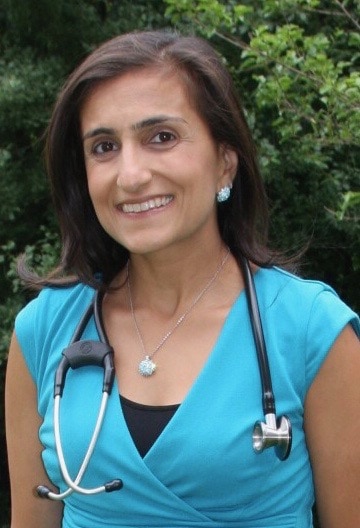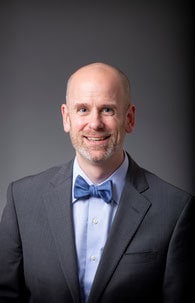COVID-19 has prompted rapid global societal change. New word combinations were introduced and made commonplace in our vocabulary, such as social distancing, masking, and flattening the curve. As this pandemic spread, the burden felt among healthcare workers who were already experiencing burnout in our medical system increased exponentially. Data sets started to grow; however, the true number of cases and the case fatality rate (CFR) remained unclear. In addition, the concepts of social distancing and masking varied across the globe. Furthermore, the swift, constant modifications of guidelines and medications led to the spread of misinformation. As the need for understanding and science grew, clinicians had difficult decisions to make for themselves, their families, and their patients. This pressure has left little time for clinicians to focus on personal wellness, despite it being a critical piece of their success.
A Look Back
Glancing back historically, one can see similarities between tuberculosis (TB) and SARS-COV-2. During the 19th century, the mortality rate of TB was high and put a stress on the healthcare system. Social distancing helped to reduce the rate of spread. Misinformation was rampant, as original theories of “cures” were gradually laid to rest and true therapies emerged via research. Having this perspective does not make the current climate with COVID-19 any easier, but it does provide us hope that this too shall pass.
At the start of the pandemic, physicians throughout the world had to make not only difficult medical decisions for their patients, but also had to worry about keeping themselves safe. There was a need to ensure an adequate supply of personal protective equipment (PPE) in the face of national shortages. Providers faced dilemmas from access issues while trying to provide timely, effective, and safe care.
Navigating Uncertainty
During these times, social media has played a pivotal role in the dissemination of information about COVID-19. The key to this form of communication is to beware of misinformation and information overload. Finding reputable sources of material for learning, connecting with others for positive networking, and limiting online screen time can be a healthy way to utilize these resources.
In navigating uncertainty during this pandemic, it is important to have a plan and appreciate that the plan may change. At the start, many outpatient clinicians had to define essential services for their clinic and decide what they were comfortable doing. Many adopted telehealth as a means to continue to provide necessary and valuable care to their patients. Guidance had to be put into place to accommodate the new workflow and working with children and other loved ones in the home setting.
Balancing both extraordinary and ordinary stresses of practice continues to be challenging. Compounding stressors can increase burnout risk. In a survey of the American Academy of Allergy, Asthma, and Immunology (AAAAI) before the pandemic, 35% of members reported burnout. While this is slightly lower than the overall rate of burnout among US physicians (estimated 45%-54%), it is a reminder that we each must create time and space to care for oneself. Burnout is not uncommon in medicine, and now in a global pandemic, the risk is even greater.
Adapting to Change
Within the specialty of allergy and immunology, and across the continuum of medical practice, change has been rapid. Depending on the region of the country, allergy and immunology practices may have closed, may have stayed open for limited services such as biologics and/or immunotherapy, or may be trying to safely accomplish in-person visits. Further making it difficult for allergists to decide how to triage patients is that COVID-19 symptoms can overlap with common allergy and asthma symptoms, including dry cough, shortness of breath, tiredness, sore throat, congestion or runny nose, decrease in smell or taste, and headache. The need to adapt swiftly to emerging research, policies for telemedicine and insurance, and to navigate local COVID-19 testing access has placed further stress upon clinicians trying to keep patients and themselves safe.
It is important to appreciate how change impacts wellness, including varying stages of grief and acceptance, which are essential for personal advancement and wellbeing. If you feel yourself slipping off the edge, get help. Confidential help is available for those struggling with mental health, alcohol misuse, or substance abuse through the Federation of State Physician Health Programs and the National Suicide Prevention Hotline (800-273-8255). During this time, it is important to connect with others socially and meaningfully. If “alone time” or a break is needed, take it. Just as compassion is practiced with colleagues and patients, it should be practiced for physicians and other clinicians themselves.
To successfully adapt to these transitions, physicians should know that many tools exist to assist in their progress. Easily accessible apps can be worked into a daily routine quickly. Adopting a “strength-focused and meaning-oriented approach to resilience and transformation” may help clinicians grow personally to deal with the frustrations they feel. Practicing mindfulness and gratitude is key. Engaging in a gratitude journal, spiritual or religious practice, or meditation are helpful channels of clinician wellness. Remember to take care of yourself physically, mentally, and spiritually.
COVID-19 has transformed our lives. Through these trying times, we must incorporate wellness into daily routines to not only aid in preventing burnout and depression, but also to encourage ourselves and each other to grow and be hopeful to see the light at the other side.



